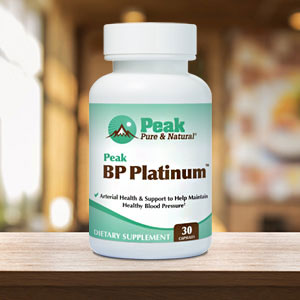Get Easy Health Digest™ in your inbox and don’t miss a thing when you subscribe today. Plus, get the free bonus report, Mother Nature’s Tips, Tricks and Remedies for Cholesterol, Blood Pressure & Blood Sugar as my way of saying welcome to the community!
Margarita burn: The risk to watch for

If you’re hitting the pool or the beach this summer, you may want to think twice before you reach for a citrusy cocktail.
That’s because according to leading dermatologists, relaxing in the sun while sipping margarita could lead to an unexpected skin risk.
Known as phytophotodermatitis, or more commonly, “margarita burn,” this condition is not only similar to poison ivy but it can go so far as to leave your skin blistered.
So before you enjoy your margarita poolside or at the beach, here’s what you need to know to keep your skin safe…
Margarita burn: a citrusy chemical reaction
Phytophotodermatitis can be thought of as a chemical reaction driven by the combination of citrus and UV exposure.
Chemical compounds, known as furocoumarins or furanocoumarins, in the citrus act as a photosensitizer — which makes your skin more susceptible to the damage the sun’s UV rays are capable of.
This allows UVA exposure to weaken the skin which in turn activates the immune system, making your skin even more sensitive to irritation. The effect is almost allergy-like.
As Raman Madan, MD, a dermatologist with Northwell Health in Glen Cove, New York, explains, “It can happen after patients come in contact with certain plants that can make your skin a little bit more sensitive to the sun. So when the UVA [ultraviolet-A] rays hit the skin, you basically can develop a rash that can look almost like poison ivy on your skin.”
And if you think that you’ll be fine as long as you don’t spend hours basking in the sun, think again.
According to Dr. Madan, the reaction can happen in as little as five minutes. You just might not see the visible effects for 24 to 72 hours.
The good news is that once the rash presents, it usually self-resolves in another two to three days.
However, although phytophotodermatitis can go away on its own, it’s not unusual to seek a doctor’s care, even for mild cases. Treatment for mild conditions includes topical corticosteroids and anti-inflammatories. For more severe cases antibiotics or oral steroids are used.
In addition to citrus plants, other offenders that can cause you to develop a rash when combined with UV exposure are fennel, celery and figs that also produce those furocoumarins.
An extra level of skin protection
So, if you want to enjoy a margarita or any of the furocoumarin-containing foods, just be sure to enjoy them in the shade.
And if you’d like to take it a step further, why not put the foods in your kitchen that do the exact opposite?
Science has shown several foods provide skin protection from UV rays, rather than sensitizing it. Some of the best include:
#1 – Grapes
Grapes are packed with resveratrol, the antioxidant that launched anti-aging research, thanks to its association with the French Paradox. It’s a powerhouse that can actually make old cells new again.
Even better, study after study has proven that eating grapes and/or taking grape seed extract protects against UV skin damage, increases resistance to sunburn and reduces cellular markers of UV damage.
#2 – Cocoa
Cocoa is not only a tasty treat. It’s packed with powerful flavonols. So it’s no wonder that research has demonstrated that drinking cocoa can help reduce skin sensitivity to UV by 15 percent after six weeks and 25 percent after 12 weeks.
#3 – Green tea
Green tea sourced from unfermented leaves is rich in polyphenols, known as catechins. Scientists have found that applying a topical extract of green teak guards the skin against UVB rays while offering broad-spectrum protection.
#4 – Sweet potatoes and carrots
Foods rich in beta-carotenes provide high levels of antioxidants, along with vitamin A. Research has shown that supplementing beta-carotene supports the skin’s structure and can provide moderate UV protection.
#5 – Green leafy vegetables
Green leafy vegetables offer their own potent carotenoids, known as lutein and zeaxanthin. This duo guards against skin aging and damage by blocking cell loss and elastin expression in connective tissue cells that have been exposed to UV rays. They’re also found in carrots, pumpkin, grapes and some berries.
#6 – Tomatoes
Tomatoes are that beautiful, juicy red thanks to a pigment known as lycopene. But it does more than just offer a bright color to this fruit. It also has been shown to have sun-protective activity in the skin.
These foods won’t take the place of sensible sun protection practices, like sunscreen, but they could offer an extra layer of protection that goes beyond the moment by fighting the culprit responsible for 90 percent of skin aging — the sun.
Editor’s note: Have you heard of EDTA chelation therapy? It was developed originally to remove lead and other contaminants, including heavy metals, from the body. Its uses now run the gamut from varicose veins to circulation. Click here to discover Chelation: Natural Miracle for Protecting Your Heart and Enhancing Your Health!
Sources:
THE ANTIOXIDANT THAT COMBATS AGING AND MAKES OLD CELLS NEW AGAIN – Easy Health Options
The Unexpected Skin Risk of Summer Margaritas by the Pool – MEDPAGE TODAY
What’s New In Natural Compounds For Photoprotection? — MD Edge Dermatology















